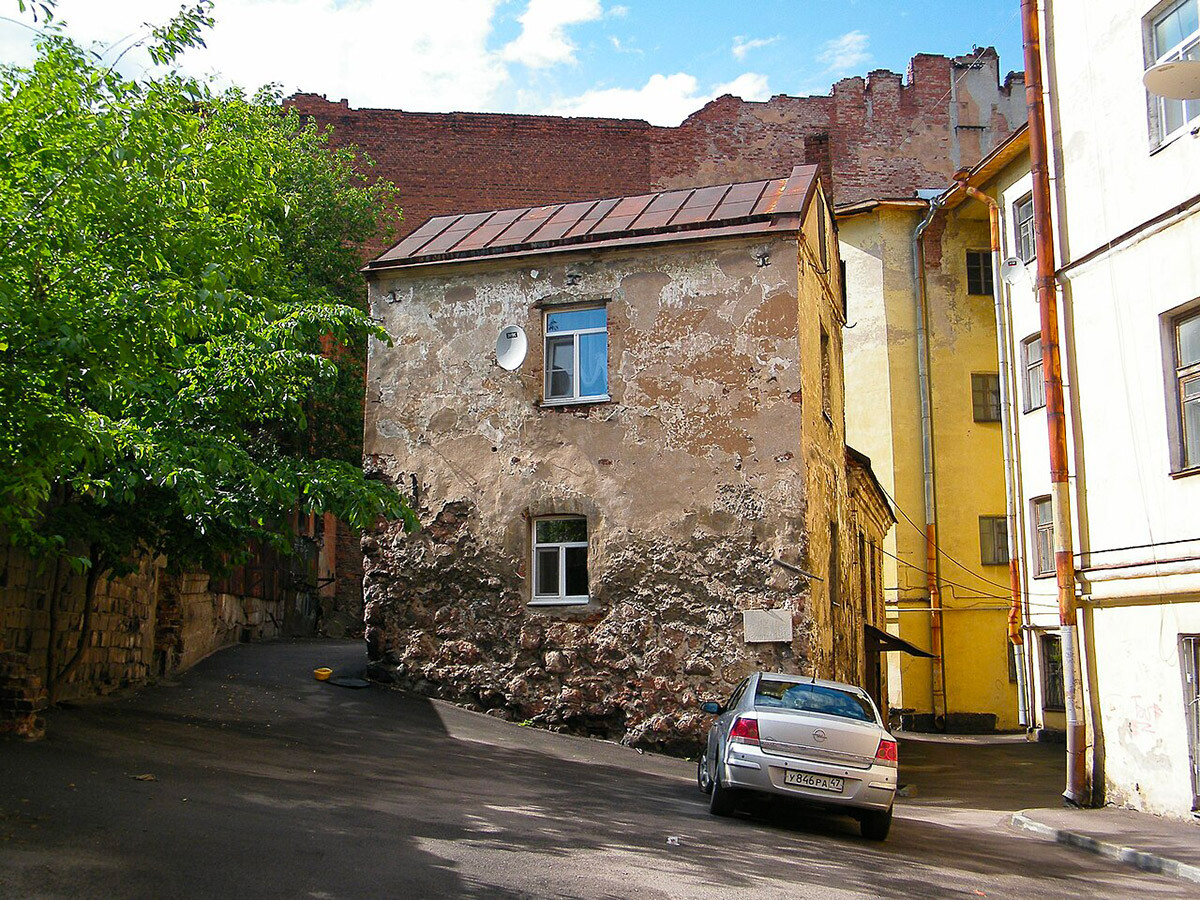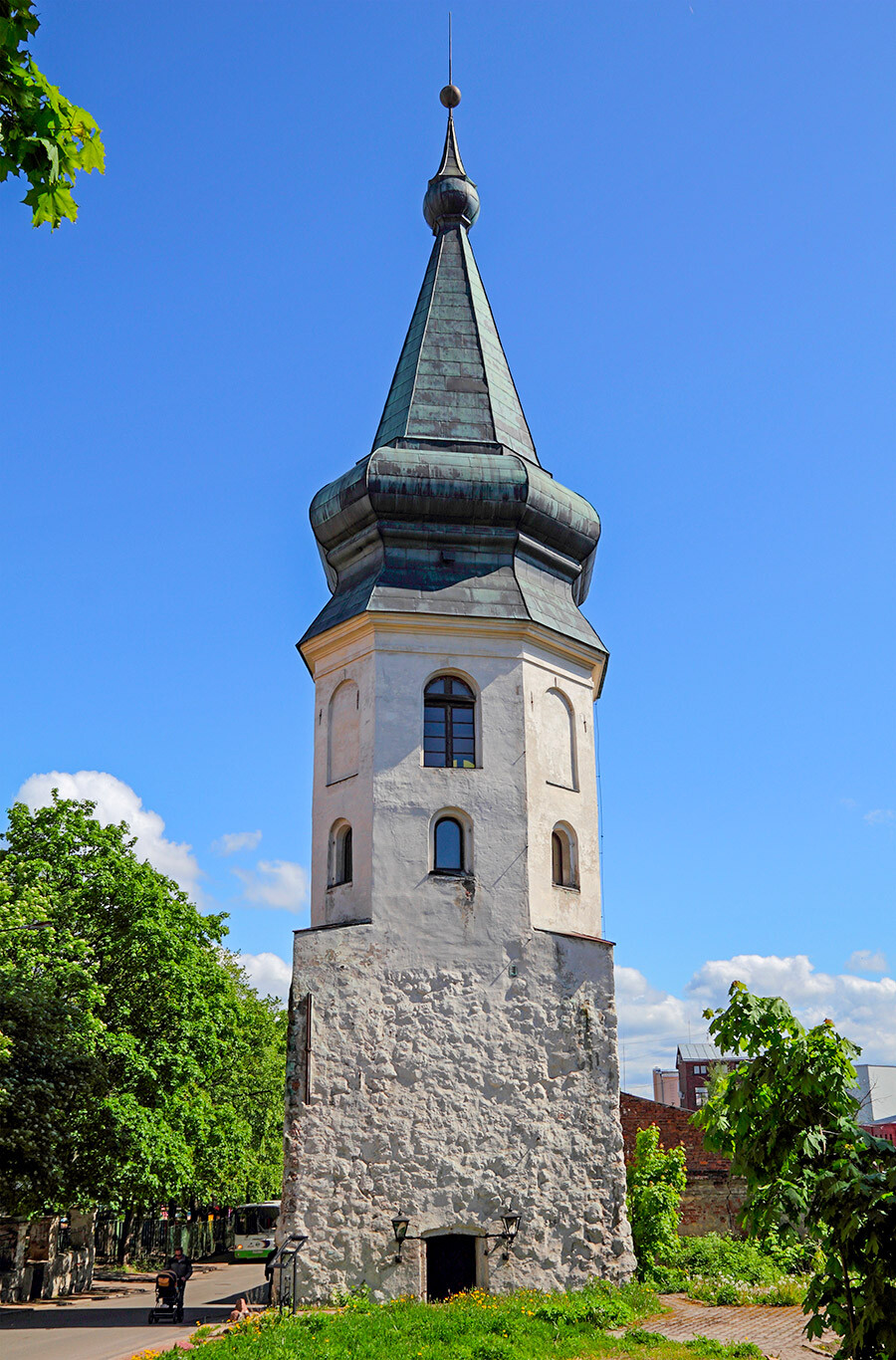
Vyborg is one of the few Russian cities with an international history. From 1293 to 1710, it was Swedish. During the Great Northern War (1700-1721), it became part of the Russian Empire. After the 1917 Bolshevik Revolution and up until 1940, it was a part of independent Finland and, in 1944, it became Soviet.
Vyborg’s main sights keep traces of the long-standing presence of Finns, who were the main population of the city until 1940.
The historical center of Vyborg is formed by buildings of different eras. The most colorful ones are slightly younger than the Late Middle Ages and look like small fortresses.

Merchant Guild House, Vyborgskaya Street 8, Vyborg, Leningrad oblast, Russia
Reda Kerbouche (CC-BY-SA)These are the ‘House of the Merchant Guild of the Holy Spirit’ (14th century), the ‘Knight House’ (early 17th century) and the ‘Burgher Estate’ (16th-17th centuries), which houses a tourist information center.

‘Knight House’
Reda Kerbouche (CC-BY-SA)
Burgher Estate
Kuds (CC-BY-SA)House 13 on Krepostnaya Street is considered to be the oldest residential house in Russia. This two-storey building, which dates back to the 16th century, is still inhabited today.

The dominant feature of the old town is the ‘Clock Tower’. It was laid at the end of the 15th century, but was rebuilt many times, due to numerous fires. It acquired its modern appearance at the end of the 18th century and, for some time, served as a fire tower. From the tower, you can see the ruins of the old cathedral, which was blown up in 1939 during the Soviet-Finnish war.

The Town Hall Tower on Vyborgskaya Street was built in the second half of the 15th century. It was once part of the city's defense wall, then an arsenal and bell tower of the Dominican Monastery.

The ‘Round Tower’, built in the middle of the 16th century, has been preserved on the Market Square. Today, it houses a restaurant inside.

This is a real medieval fortress, founded by Swedes in the late 13th century. Its symbol is the white ‘St. Olaf Tower’, which is 75 meters tall.

On a small island, there was a concentrated ‘Zeughaus’ (‘storage room’), a prison, an arsenal, a household and residential buildings, stables and cellars. The castle retained its military significance until 1964, when the Soviet Ministry of Defense handed it over to museums.
Connoisseurs of architecture will notice many buildings in the style of Northern Art Nouveau on the streets of the city, which dominated the city's development from the end of the 19th century almost until the 1917 Bolshevik Revolution.

The most striking examples are the market building and the development of Lenin Avenue bordering the market. In Russia, in addition to Vyborg, the style is also widely represented in St. Petersburg.

The only building of the famous Finnish architect in Russia was built in 1933-1935 in the style of modernism.

Inside, there is a large reading room with round windows on the ceiling, a concert and lecture hall with a wavy wooden ceiling and panoramic windows.

The building was restored in 2013 and recreated almost in its original form. It can be visited on a guided tour or go for a free lecture, exhibition or concert.

The estate and park ensemble and the adjoining rock landscape park of the 18th-19th centuries are located away from the historical center.

This is the former estate of Ludwig Nicolai, the president of the St. Petersburg Academy of Sciences. There, you can walk along well-groomed alleys and almost untouched forest park part, ride a pleasure boat in the bay or go rock climbing.

The former fortress bastion is one of the best lookout points in the city. It offers views of the South Port, the harbor and the rooftops of the city’s old houses.

The ‘Panzerlax’ also served as the foundation for two modernist buildings built in 1930. One is now occupied by a branch of the Hermitage, the other by a children's art school. The casemates and the gunpowder storehouse of the bastion house archaeological expositions.

The platform for open-air choir festivals was created in 1932 on the territory of the former East Vyborg fortifications (since the 1950s, their territory has been occupied by the city park). The tiered stage made of granite blocks is reminiscent of ancient Greek amphitheaters.

Dear readers,
Our website and social media accounts are under threat of being restricted or banned, due to the current circumstances. So, to keep up with our latest content, simply do the following:
If using any of Russia Beyond's content, partly or in full, always provide an active hyperlink to the original material.
Subscribe
to our newsletter!
Get the week's best stories straight to your inbox